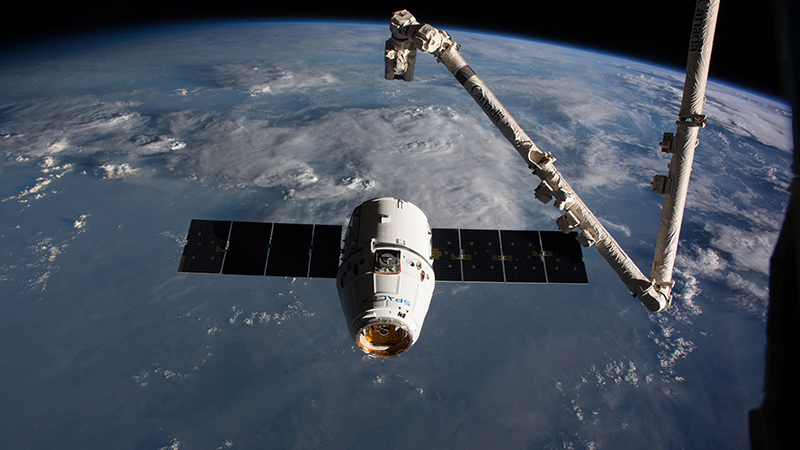Stay Up to Date
Submit your email address to receive the latest industry and Aerospace America news.
Among the new experiments launched to the International Space Station on a Dragon capsule in August was one for the Michael J. Fox Foundation, the Parkinson’s disease research group established by the actor who went public with his diagnosis in 1998.
In Parkinson’s disease, brain cells that produce the chemical messenger dopamine die off, with the result that patients gradually lose their ability to make coordinated movements. In a subset of Parkinson’s patients, mutations in a gene, which produces a protein, can cause the disease. Researchers are searching for a drug that can bind to the faulty proteins, disabling them and potentially stop Parkinson’s progression in those patients.
Growing crystals of these proteins in space could be part of the solution. The technique dates back to work in the mid-1980s aboard the space shuttle and later the Soviet-Russian Mir space station. The draw: Under Earth gravity, protein molecules in the lab become compact, clumped and difficult to study structurally. Take away that gravity, and many proteins grow larger and with more neatly ordered structure. Once back on terra firma in solid crystalline form, their structures can be imaged and studied to resolve tiny, but critical facets of their shapes.
Those insights could aid development of precision drugs that would fit lock-and-key with a protein’s form, inhibiting its function and potentially treating disease. “The name of the game is finding the right conditions for growing crystals so you can get better pictures,” says Michael Roberts, deputy chief scientist at the Center for the Advancement of Science in Space, which manages the ISS National Lab.
The Parkinson’s protein of interest — dubbed LRRK2 (“LURK-two”) — was shipped in a frozen state to the Kennedy Space Center in Florida. Bits of hardware about the size of Band-Aids, called Microlytic Crystal Former Optimization Chips, held fluidic samples of the protein in 16 tube-like channels; once thawed on orbit, the protein mixed with other chemicals that promote crystallization. After three weeks of crystal growth, 10 of the chip samples were scheduled to return to Earth in September, again aboard Dragon.
Beaming X-rays at the resulting crystals could reveal “druggable” target areas otherwise too scrunched up to visualize in terrestrially reared samples. “Drug developers can really optimize their work if they have LRRK2’s atomic structure,” says Marco Baptista, associate director of research programs at the Michael J. Fox Foundation.
“The name of the game is finding the right conditions for growing crystals so you can get better pictures.”
Michael Roberts, deputy chief scientist at the Center for the Advancement of Science in Space
About Adam Hadhazy
Adam writes about astrophysics and technology. His work has appeared in Discover and New Scientist magazines.
Related Posts
Stay Up to Date
Submit your email address to receive the latest industry and Aerospace America news.




